Konya – Home of the Whirling Dervishes
In the last post our Adventures Abroad western Turkey tour made its final stop on the Mediterranean coast at the city of Side. It was now time to turn inland and cross the Taurus Mountains to the high plateau of Anatolia where the fabled region of Cappadocia awaits us. But, before we get to Cappadocia we are going to visit the city of Konya, known in antiquity as Iconium, but more recently famous as the place where the sect of the Whirling Dervishes was founded. Please join us on what promises to be a fascinating visit.
The trip from Side to Konya is one of the longer rides we have had on this trip, but it is also one of the most scenic. Here is the route that we will take.
Much of the first part of this day’s journey involves climbing up and over the Taurus Mountains that are heavily forested in places and quite barren in others. I noticed this hole through the mountain crest in one spot we passed.
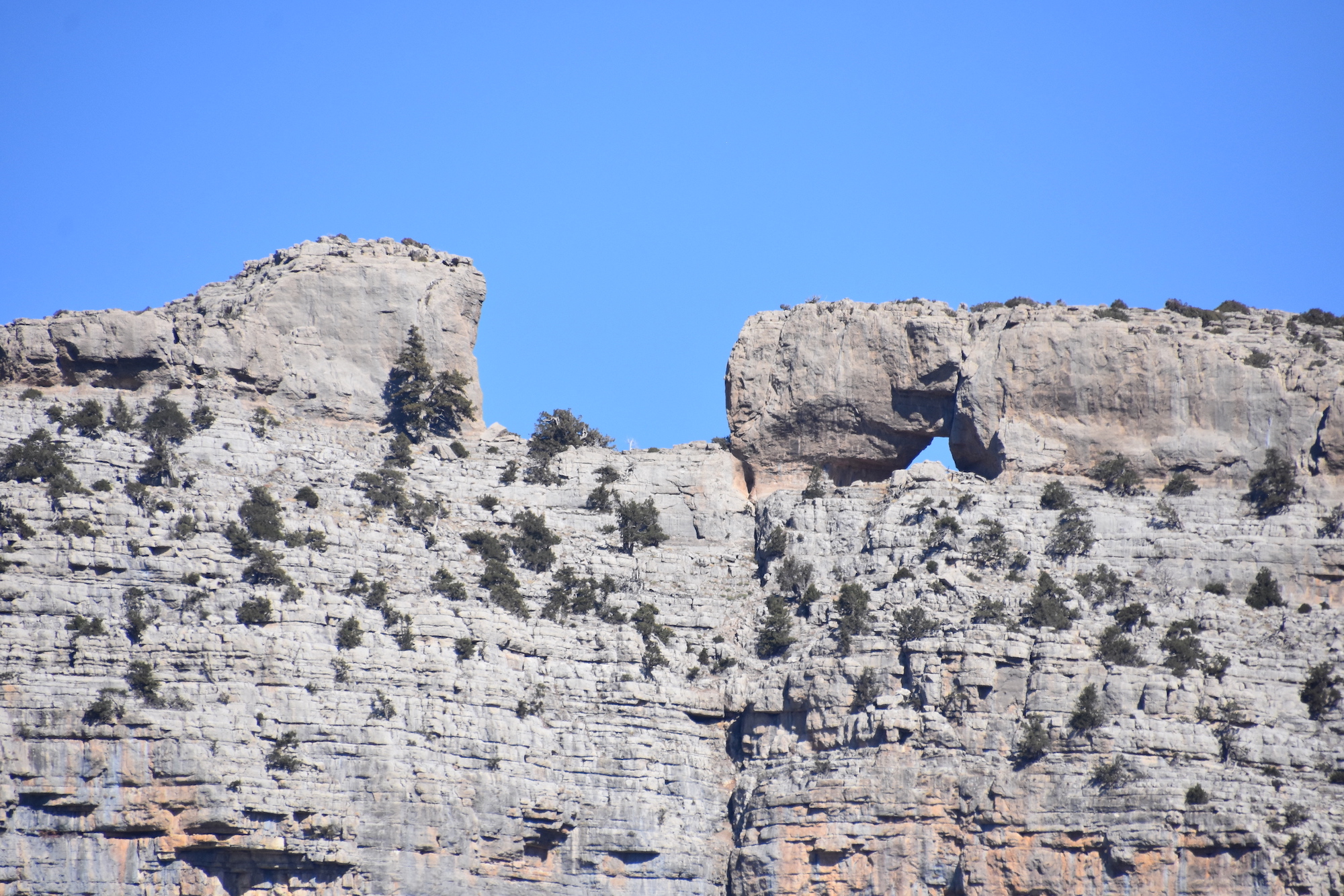
During our morning coffee and bathroom break I saw my first ever Iraqi license plate, lending a sense of mystery to the idea of heading deep into a very religious part of Turkey.
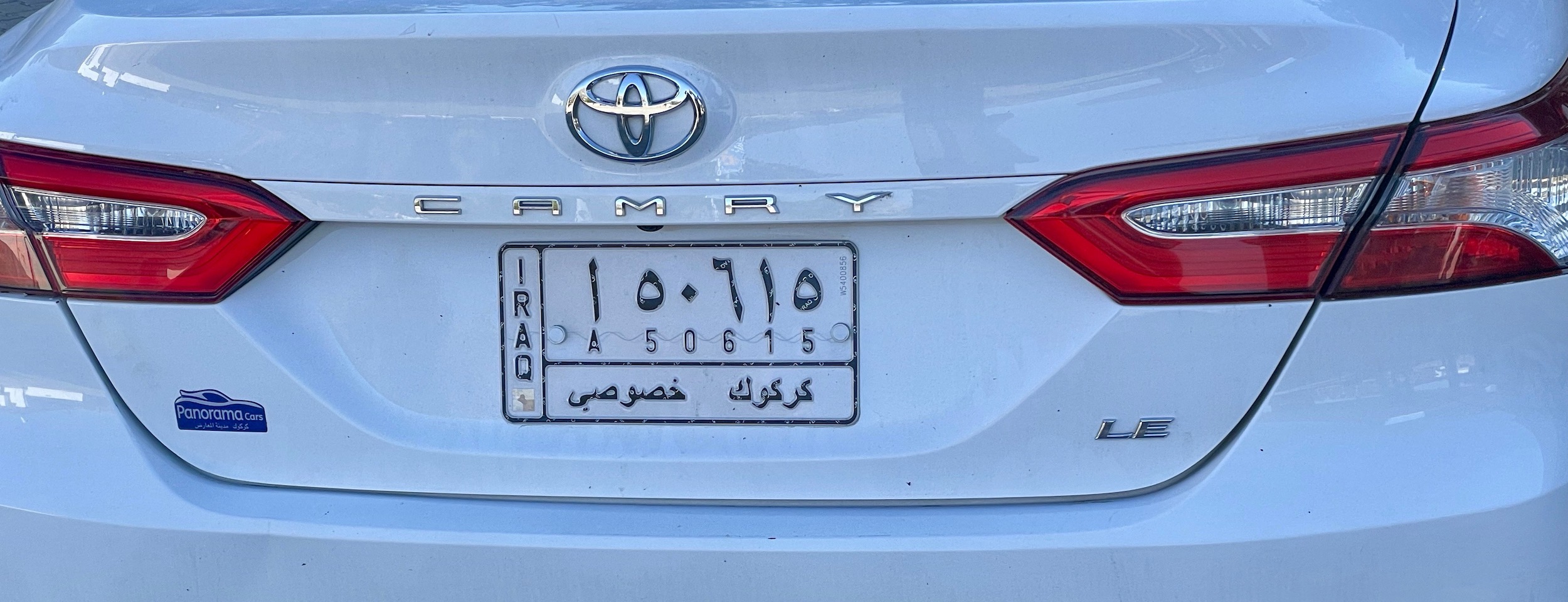
History of Konya
Konya’s history goes back over 5,000 years and through that time span it has been part of over a dozen distinct historical domains, the likes of which we are more than familiar with by now. I won’t bore you with the details because most of what we are interested in at Konya dates from the modern era. St. Paul and Barnabas arrived here after being shooed away from Antioch and caused a riot among the Jewish population, some of whom believed their preachings and most who didn’t. They were unceremoniously given the bum’s rush accompanied by plenty of stones.
However, Paul got the last laugh as Konya (still Iconium then) became a major Christian centre and eventually a metropolitan see and for seven hundred years was a Byzantine stronghold. After the Battle of Manzikert in 1071, which the beginning of the end for the Byzantine Empire, the Seljuk Turks created the Sultanate of Rum with Konya as the capital. It flourished for over 150 years before gradually being absorbed into the Ottoman Empire. Much of what we will see in Konya dates from the Seljuk period.
Today Konya is Turkey’s seventh largest city with almost a million and a half people. It has the largest public university in the country with over 75,000 students. It is also the ancestral home of the famous modern quack and US Senate hopeful Dr. Oz, whose parents emigrated from Konya to the US.
Driving into Konya I noticed a number of these signs proclaiming it to be the City of Hearts.
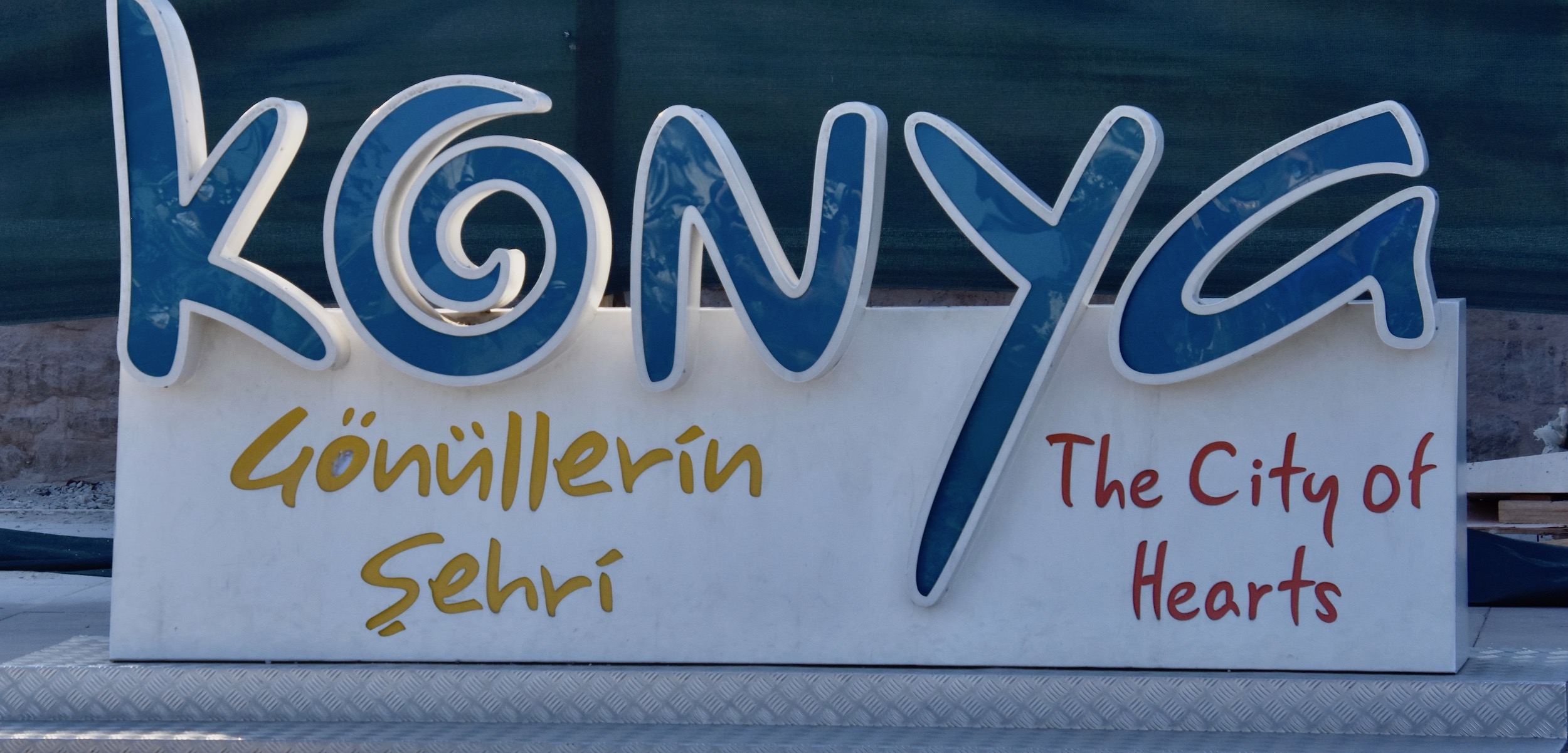
As far as I can learn this arises from a reference to the ‘heart’ of the great Persian poet, scholar and mystic Jalãl al-Dīn Muhammad Rūmī, usually referred to just as Rūmī. He settled in Konya while it was the Sultanate of Rum and thus his sobriquet which actually means ‘Roman’. Another term for him is Mevlânâ which translates as ‘my master’ and is widely used in Konya where we will visit his tomb at the Mevlana Museum during our first stop in the city. While the works of Rūmī may not be widely known in North America, he is in fact one of the most influential poets in the world. His lengthy poem Masnavi is considered to be one of the greatest mystical works ever produced and the guiding text for the practice of the Sufi sect commonly referred to as the ‘Whirling Dervishes’. The sect actually arose after his death and was based on his teachings that stressed expressions of love for Allah through music, poetry and dance. It’s all very complicated to explain so let’s head to the museum to learn more.
Mevlana Museum
The term ‘museum’ is a bit misleading because this is actually the mausoleum of Rūmī and many of his followers. It was built under the Seljuk rule and completed in 1274, but there have been a number of additions since, such as the minarets in the photo below. In 1926 the Turkish government declared it to be a museum. It was never a mosque, but did serve as a major gathering point for the Whirling Dervish sect. Since then a small mosque has been added, but is not part of the visit.
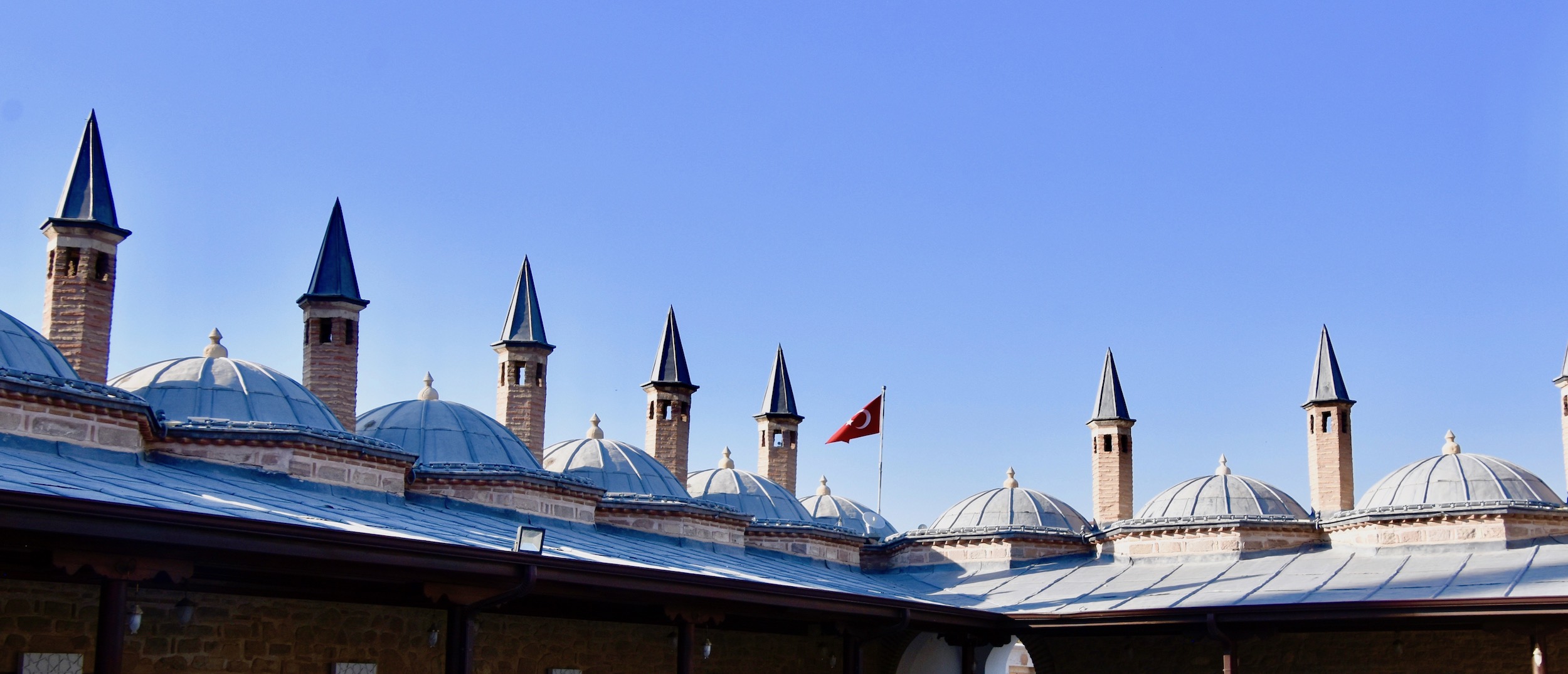
Outside the museum we first come across this small cemetery with a number of Muslim graves adorned with rose bushes.
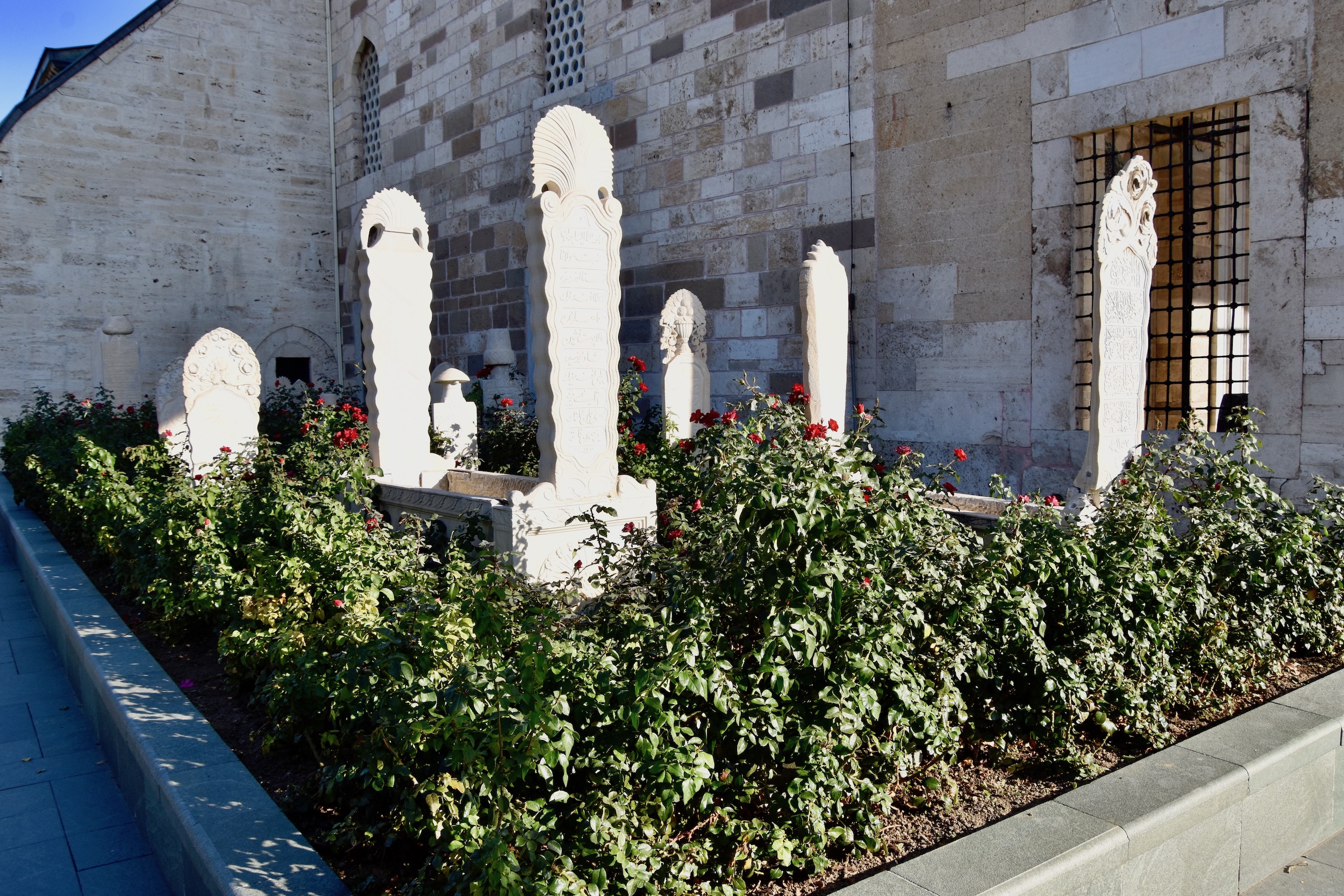
In front of the entrance is this fountain which our guide Yasemin tells us was the first place around which the Dervish sect practiced its now iconic whirling mystical dance that brought the believers into a trancelike state that they believed allowed them to become closer to religious perfection. If you have ever witnessed this ritual you will know that it is truly mesmerizing not only for the Dervishes but anyone who watches them. If you haven’t seen it, you should definitely make an effort to do so. There are a number of public squares in Istanbul where the Dervishes regularly appear in the evening, accompanied by some of the most beguiling music you will ever hear. You can also see them in a special show in Konya which a couple of our group attended. Yasemin helped arrange it and they were very pleased with what they saw.
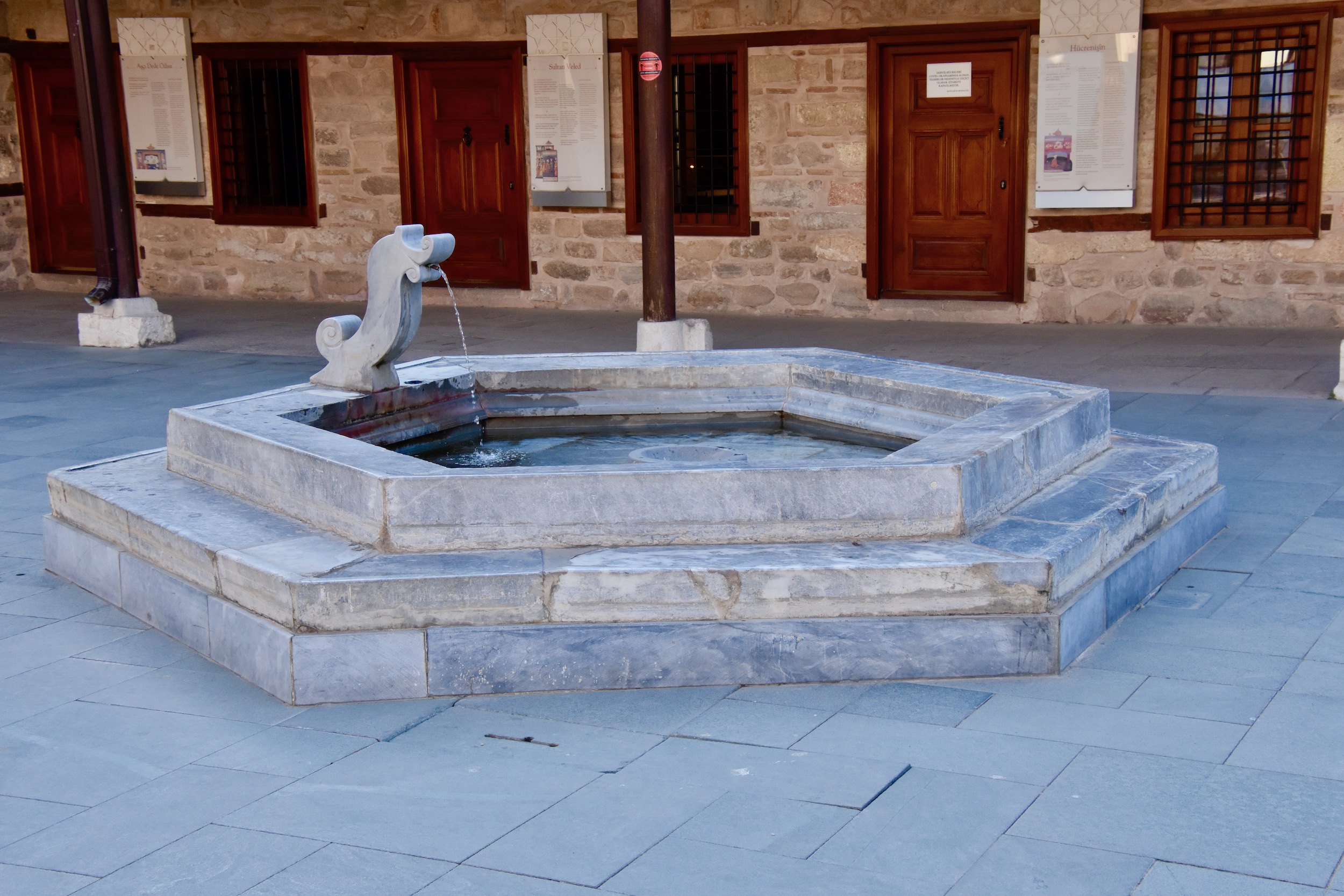
This is a view of the museum, but unfortunately the most prominent feature, the green dome directly under which the great mystic is buried, is literally under wraps.
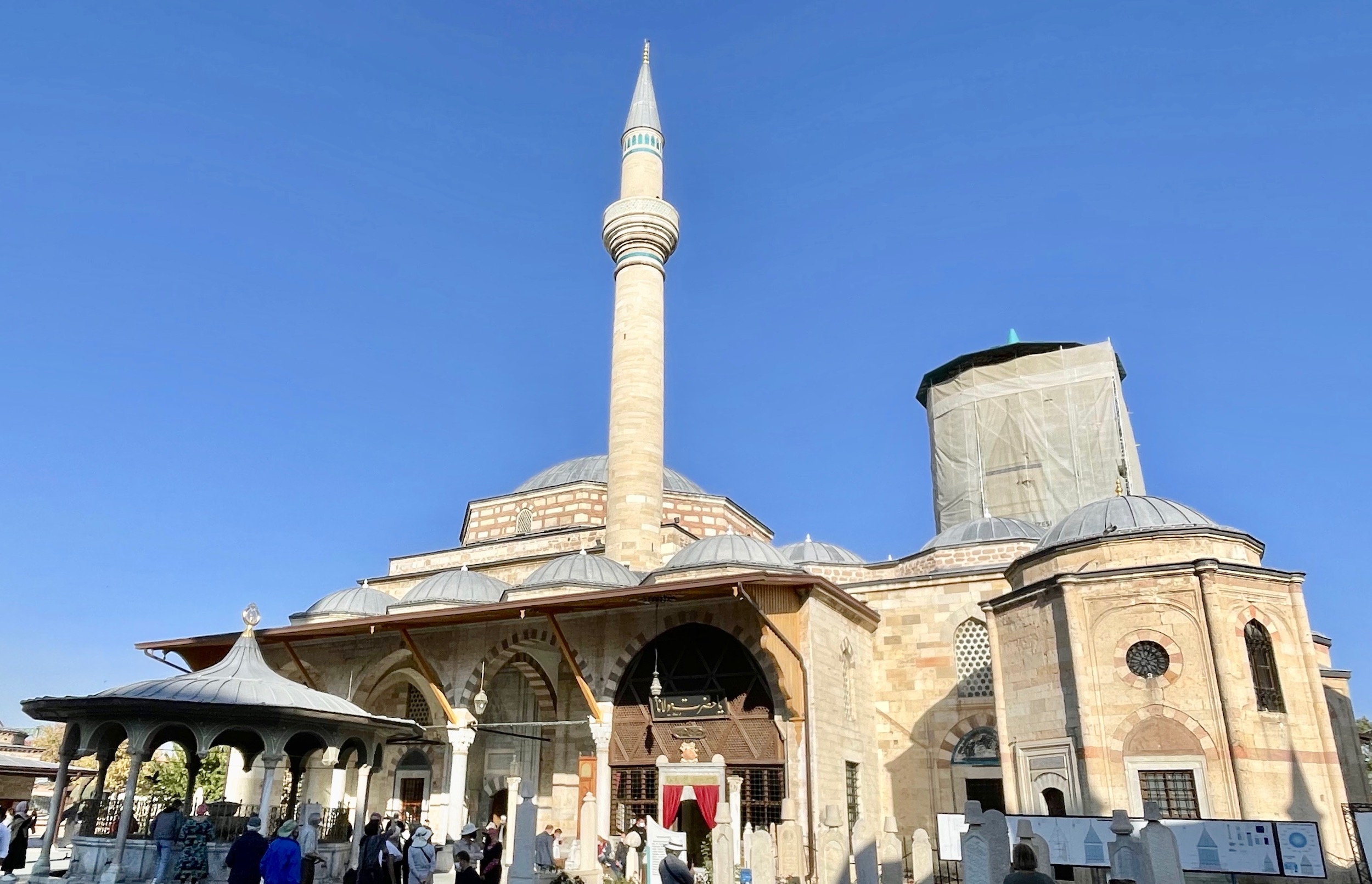
The interior is a riot of Islamic decoration with Rūmī’s tomb set high above many of the most prominent founders of the Dervish sect.
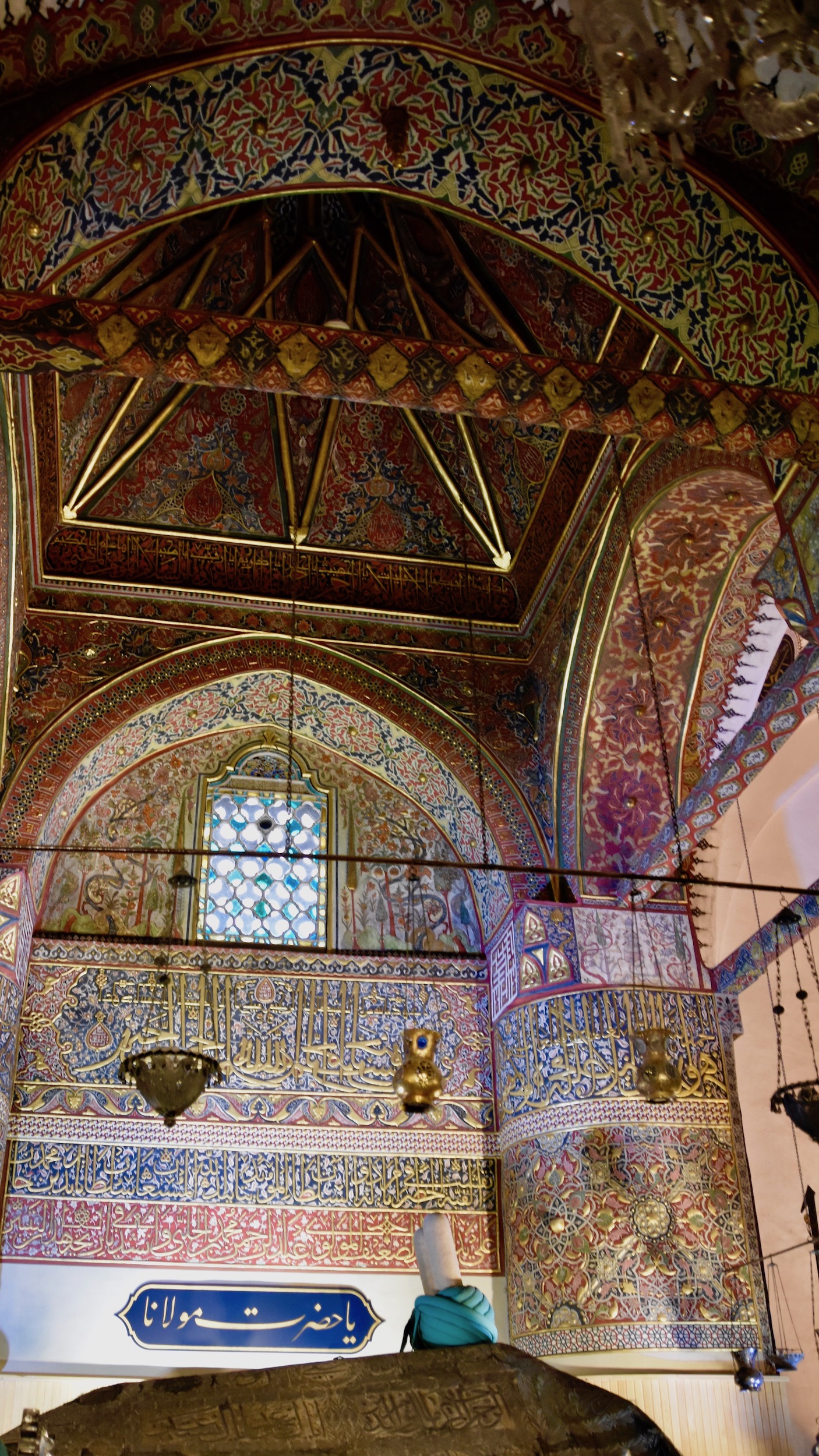
This is the absolutely fantastical ceiling directly above the tomb.
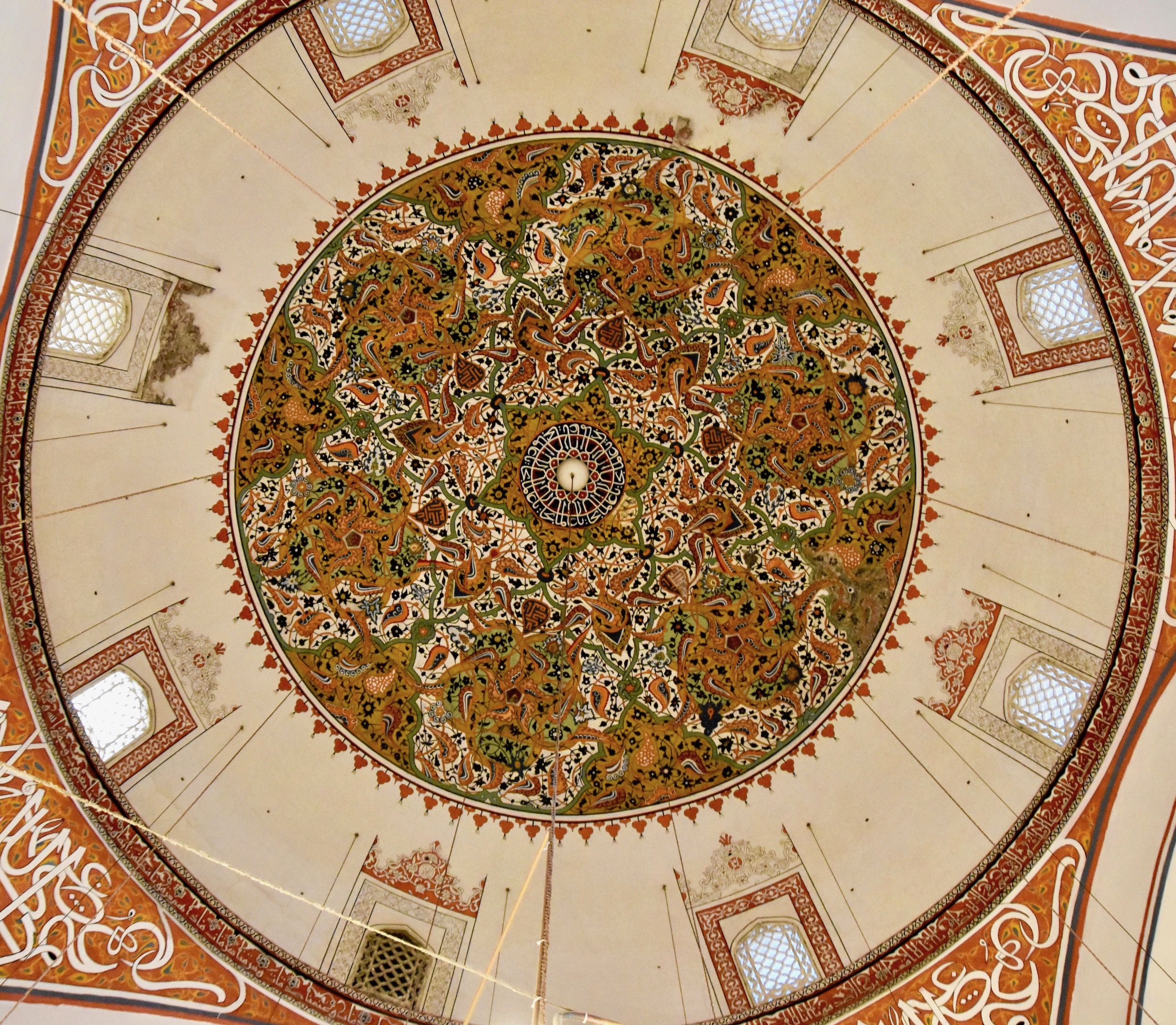
These are the tombs of some of the most prominent followers of Rūmī.
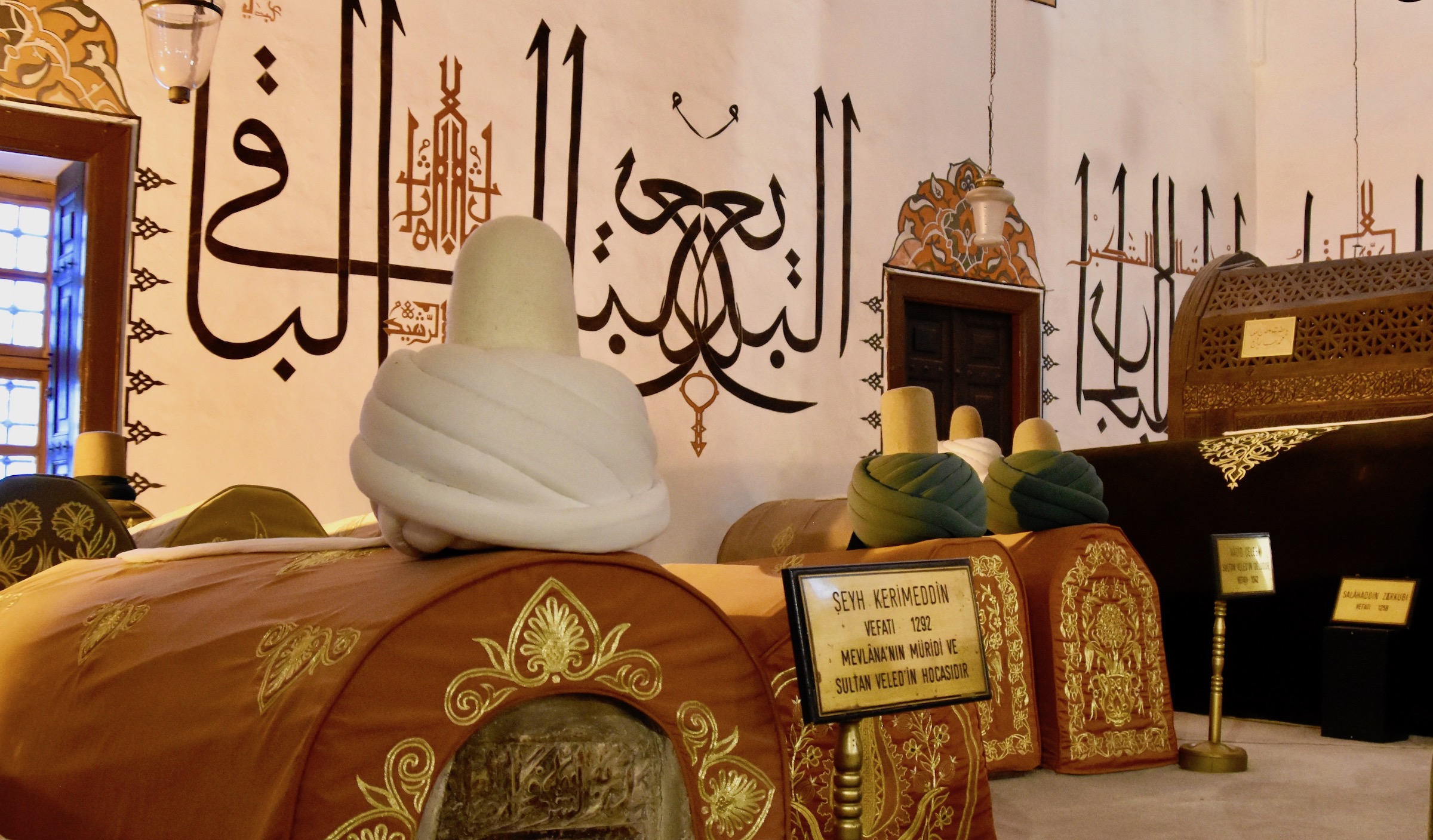
Rather than being a museum this place is actually a place of pilgrimage for millions of muslims worldwide and to be honest I felt like a bit of an intruder, not knowing much about Rūmī or his teachings. As we leave the building I look up and see the symbol of the Dervish sect high overhead Konya.
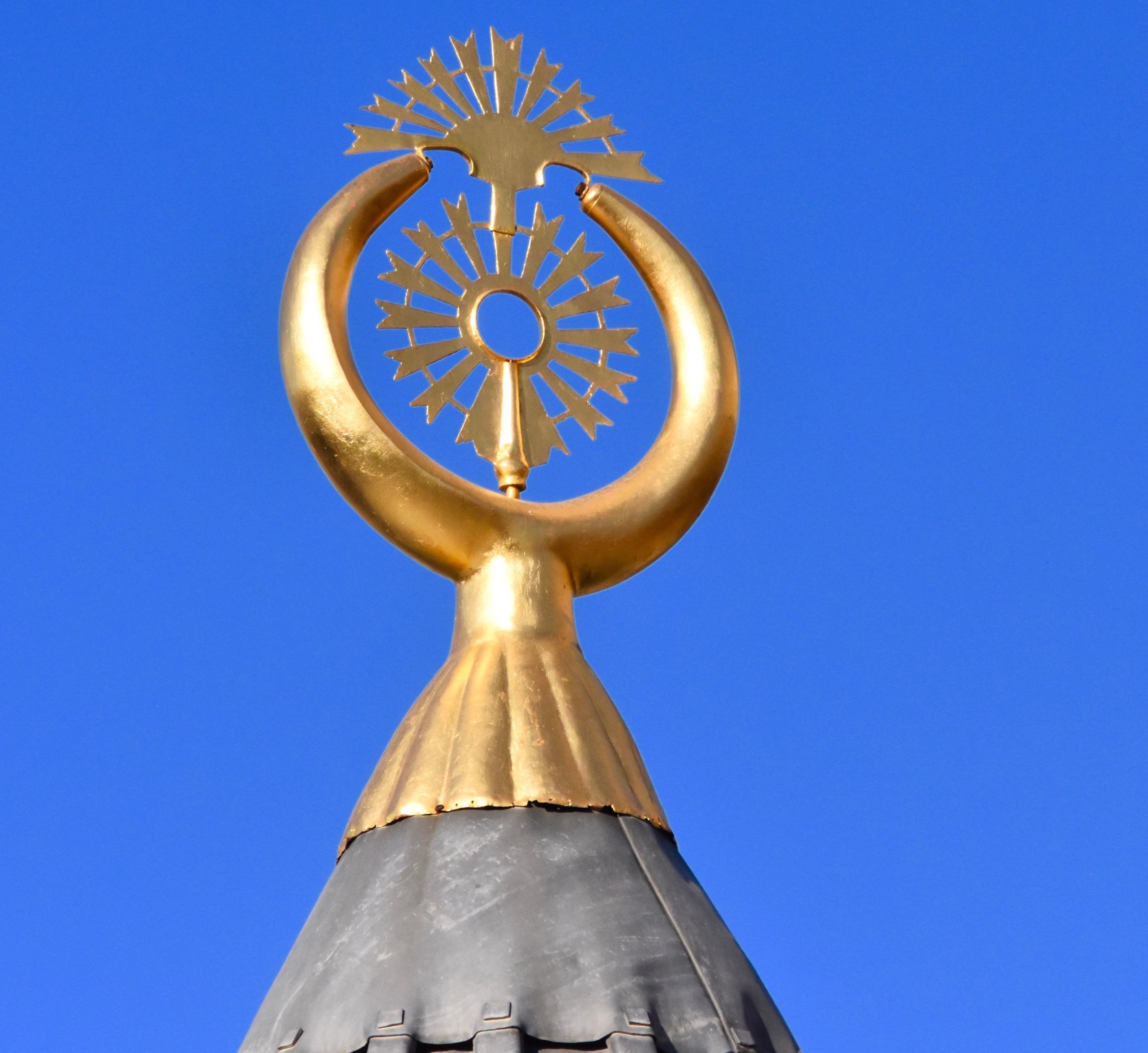
The Madrasas of Konya
Konya is also well known in the Islamic world for its many famous madrasas which are educational institutions. Contrary to popular belief they are not confined to religious education, but can be secular as well. Thanks to Osama bin Laden and other religious fanatics, madrasas have a bad reputation in the West, but that was not always the case. At one time and still in many places, madrasas were/are important institutions of higher learning. However, the two most famous madrasas in Konya, the Karatay and the Ince Minare are no longer teaching institutions, but museums noted for their architecture and interior decoration.
Today we will visit Ince Minare which means ‘School of the Slender Minaret’. Built between 1260 and 1265 by the Seljuk Rum, it once had a magnificent minaret of which only the bottom third now remains. It is impressive enough, but really must have been something when fully erect.
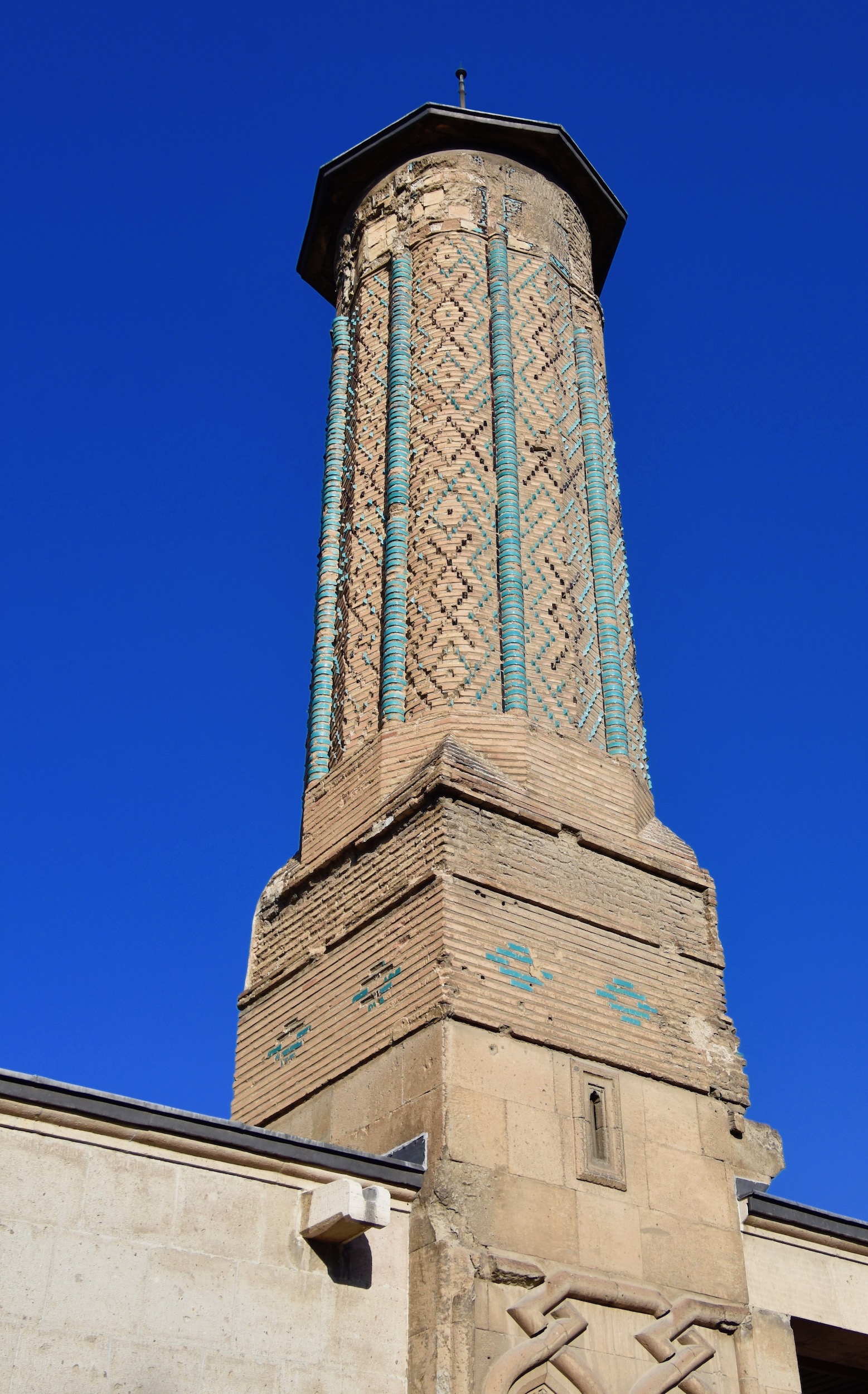
Aside from the minaret Ince Minare is renowned for its entrance portal which as you can see is very impressive.
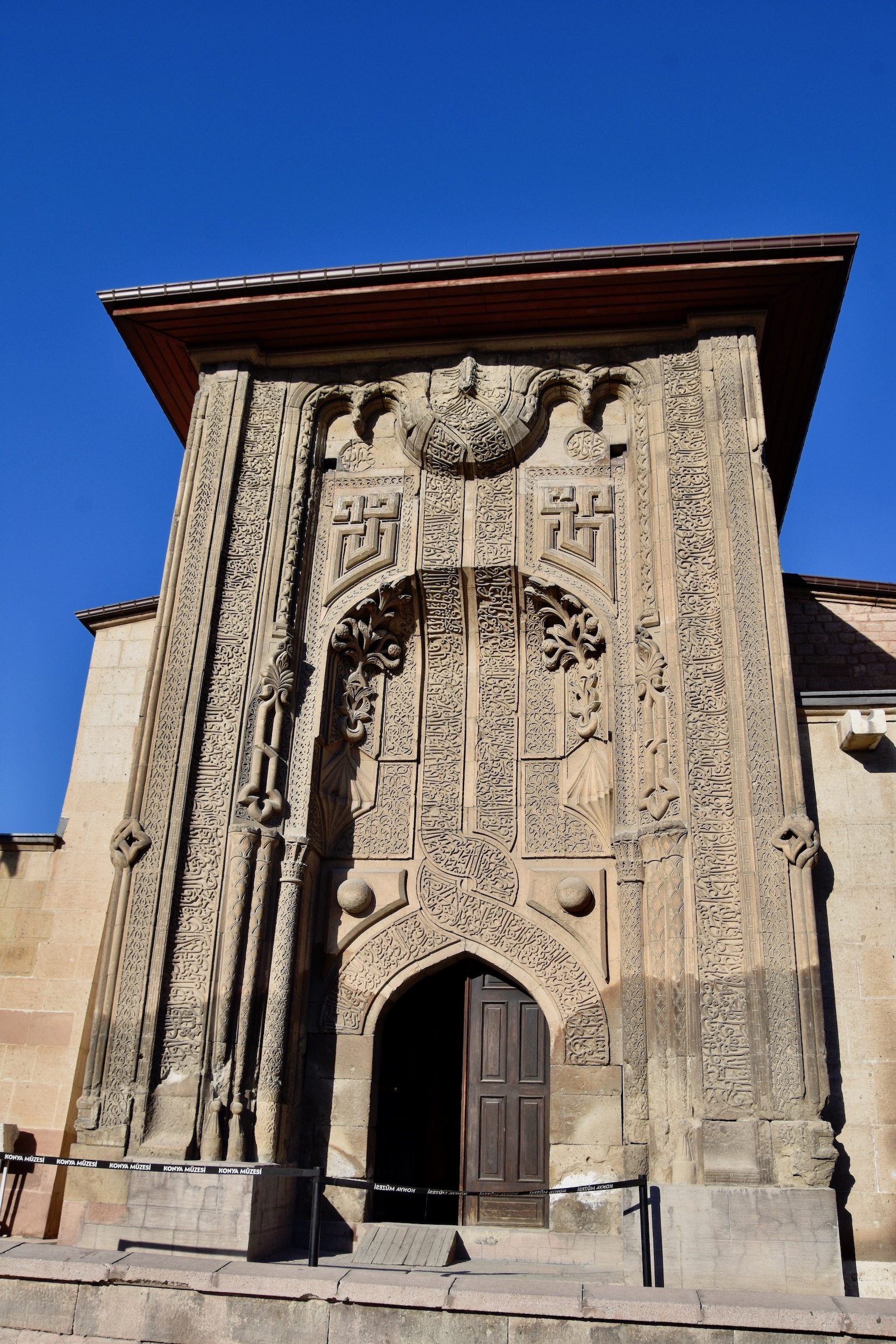
Inside the madrasa there is this very unusual wooden dome with stylized stars.
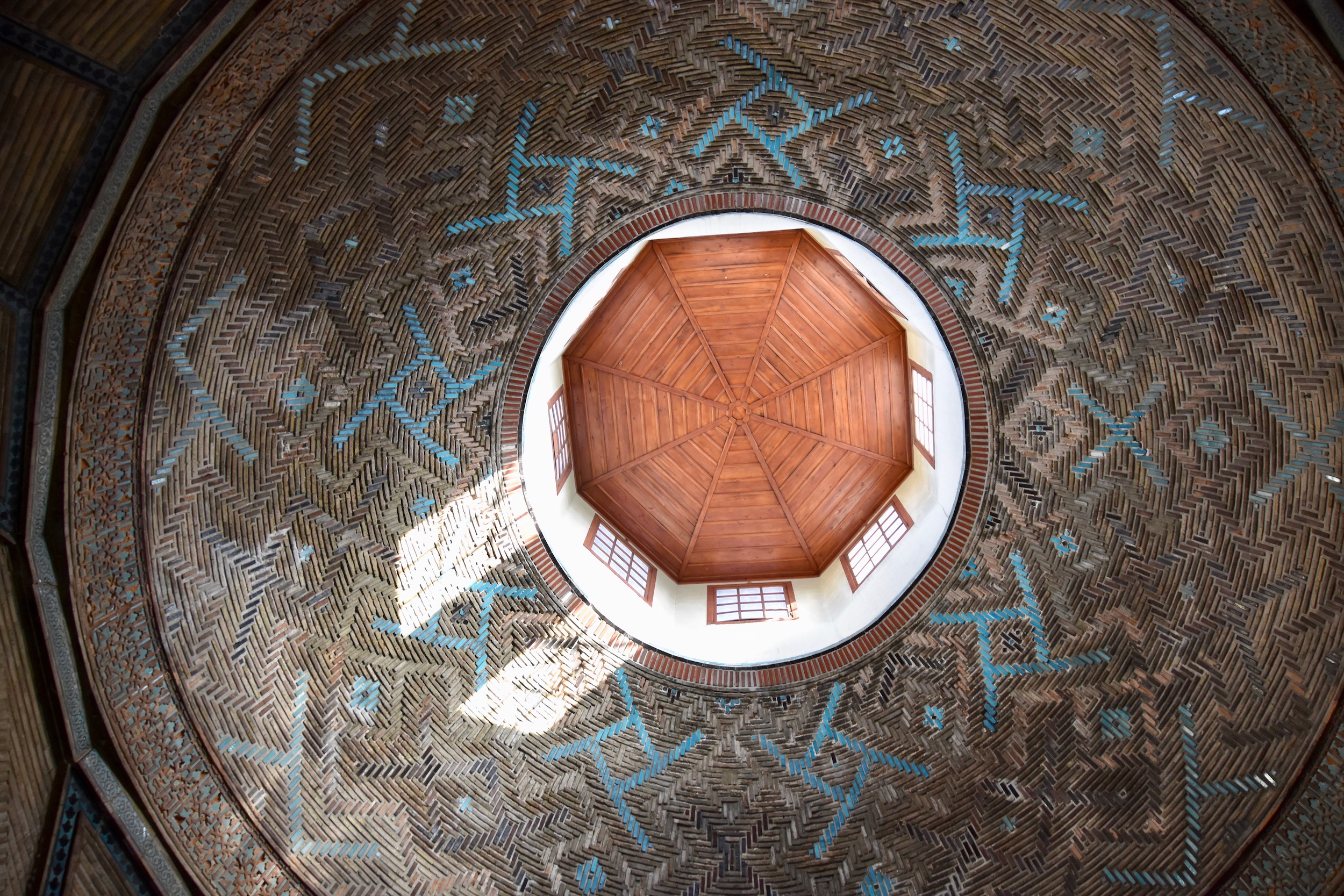
Everywhere you look there are interesting details such as this double headed eagle that the Seljuks where using as their symbol in Konya long before the Hapsburg dynasty adopted it as theirs.
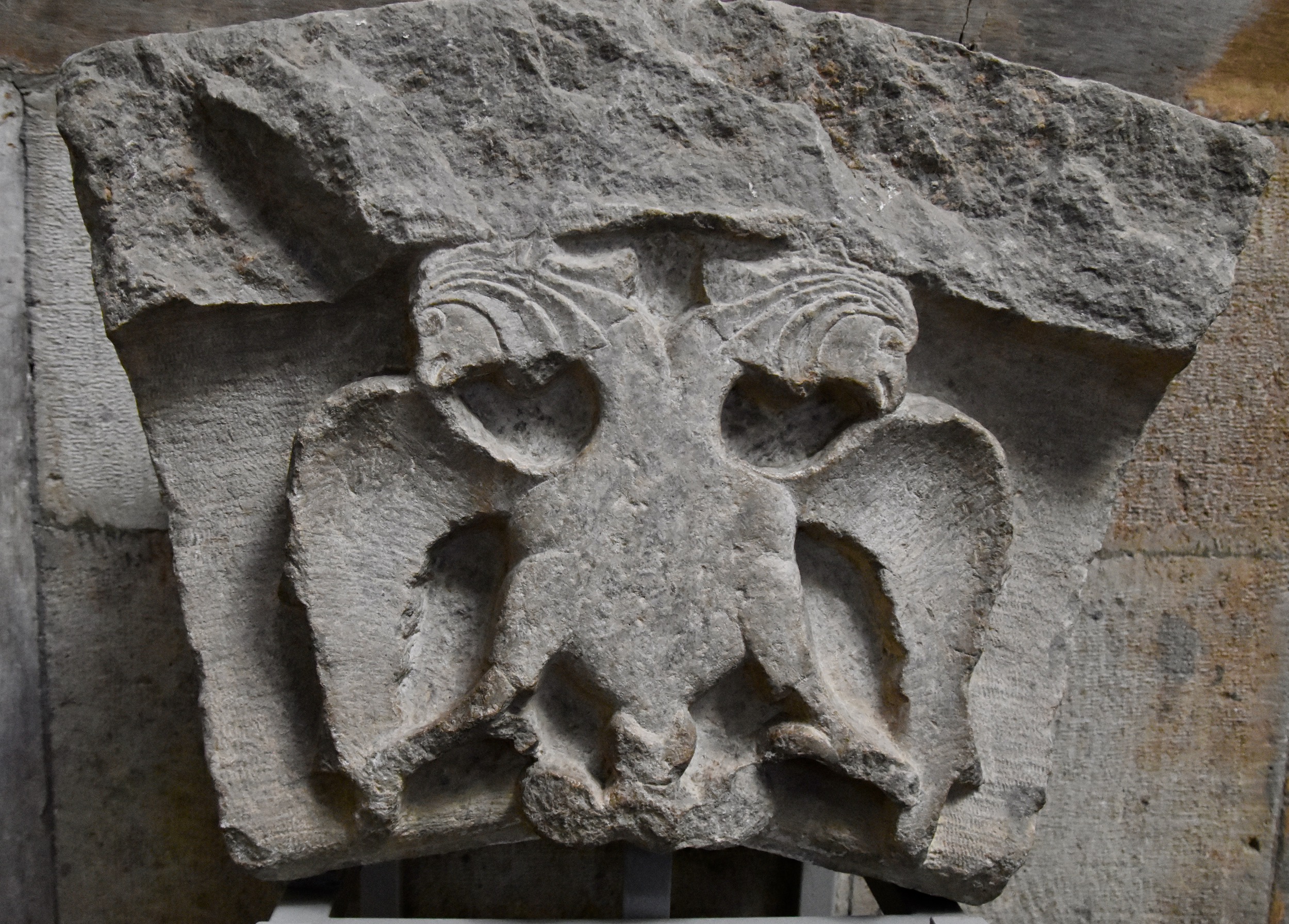
Elephants are a common motif and seem to contradict the Muslim interdiction against depicting figurative representation as a form of idolatry.
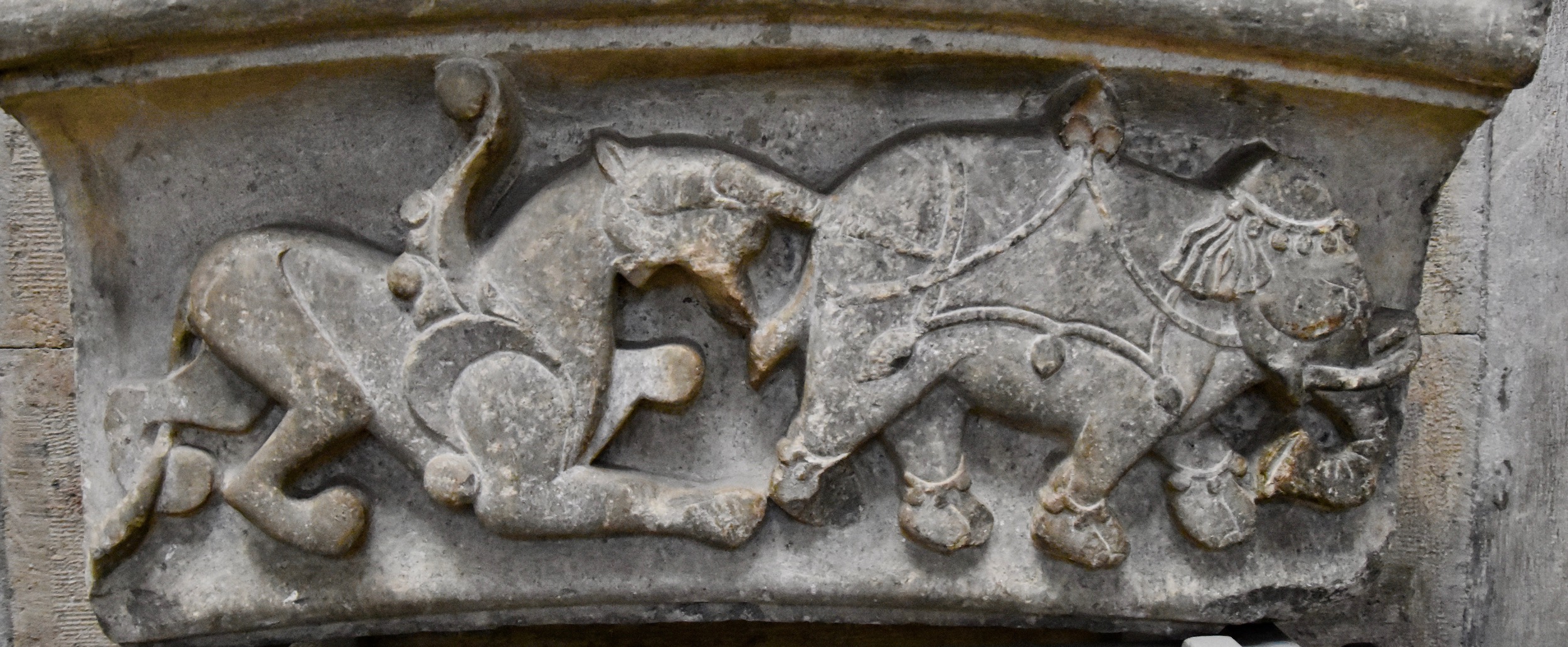
Even more explicit are these representations of various animals including what I must presume from the spots is a leopard and not a lion.
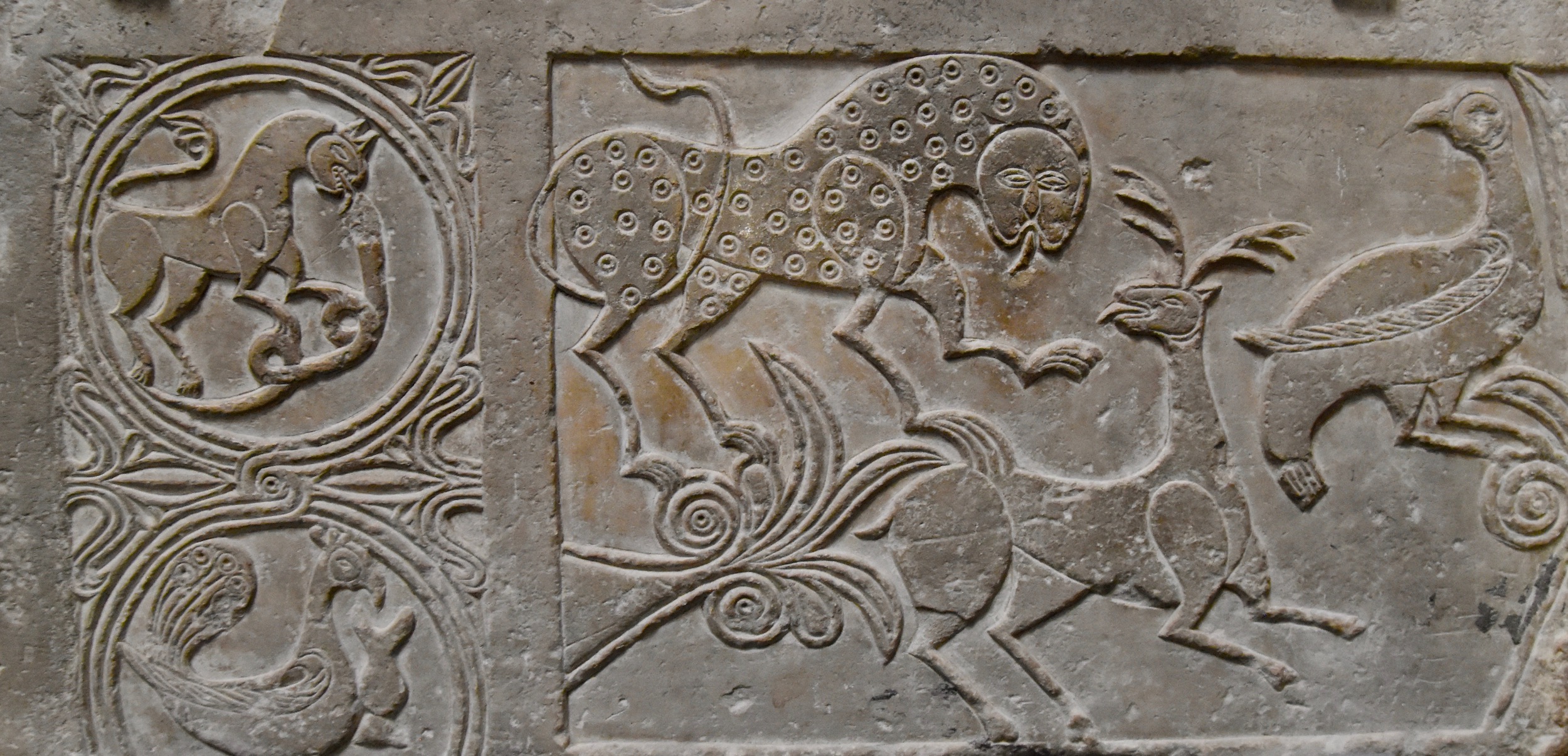
Most interesting of all is this angel. These celestial beings were as important in Islam as in Christianity and Judaism.
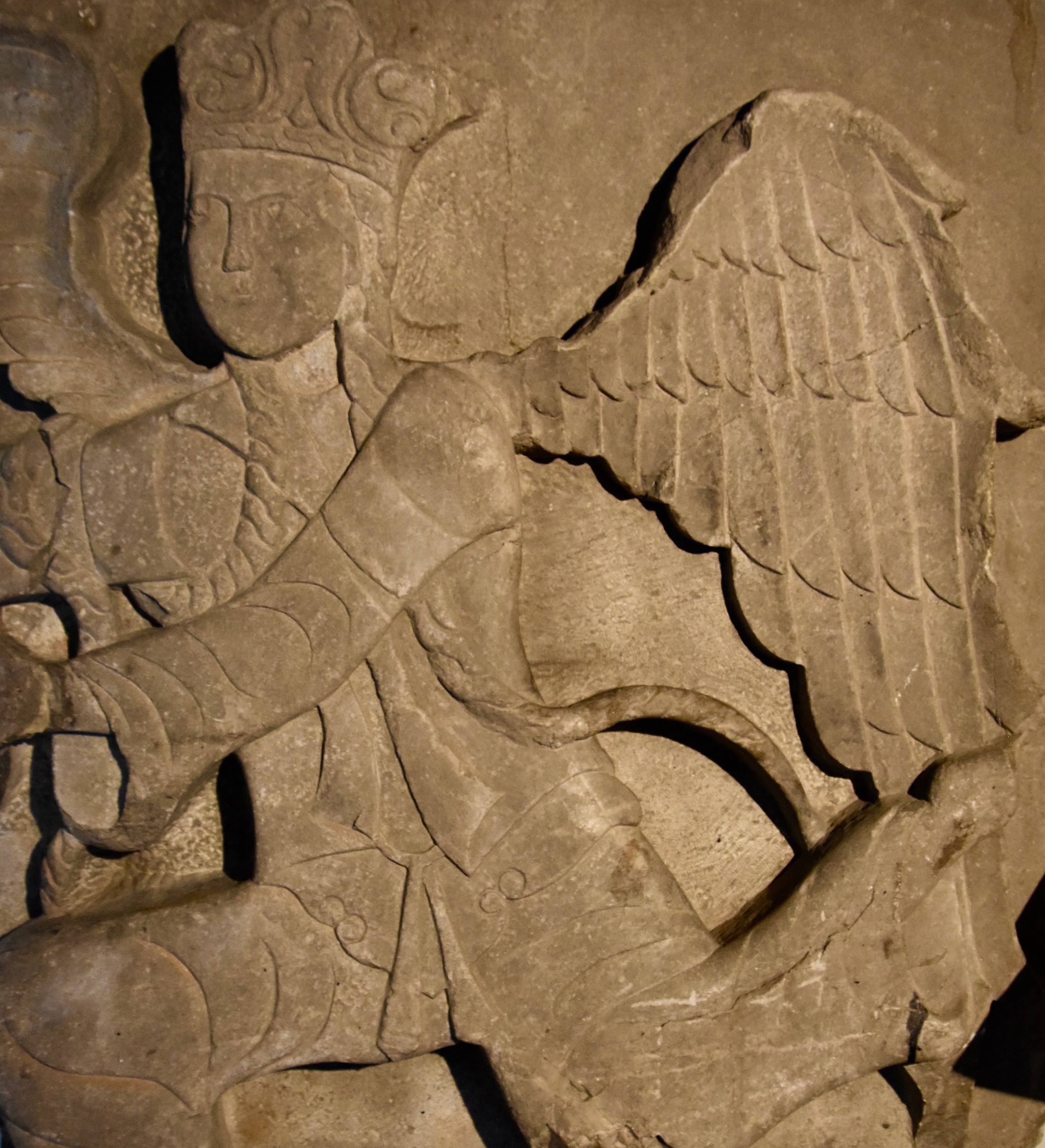
Hotel Dundar

The Hotel Dündar in Konya was one of my favourites on the tour. Despite being quite modern it has touches that reflect the city’s past such as this fountain at the entrance.
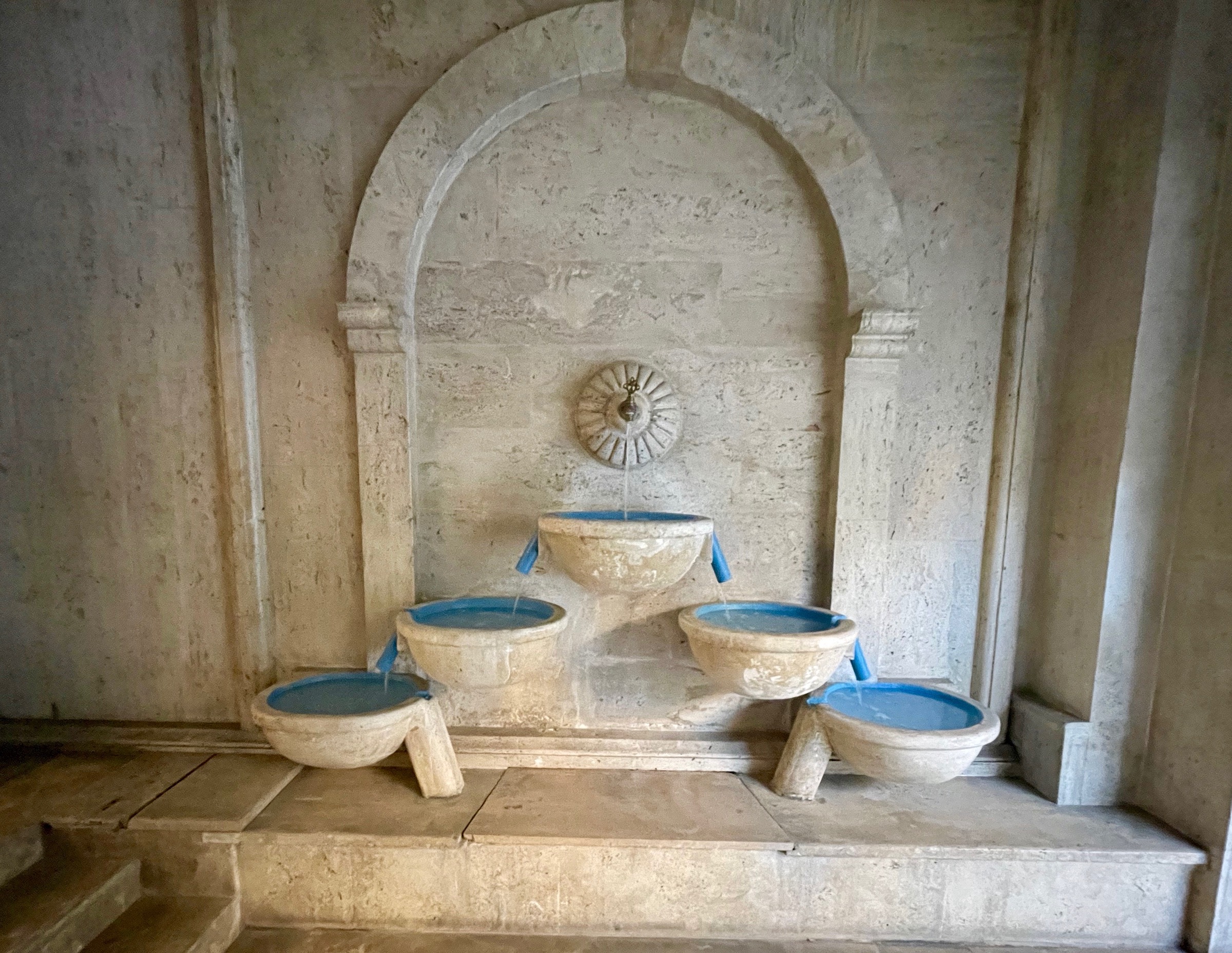
And this marvellous Whirling Dervish mural.
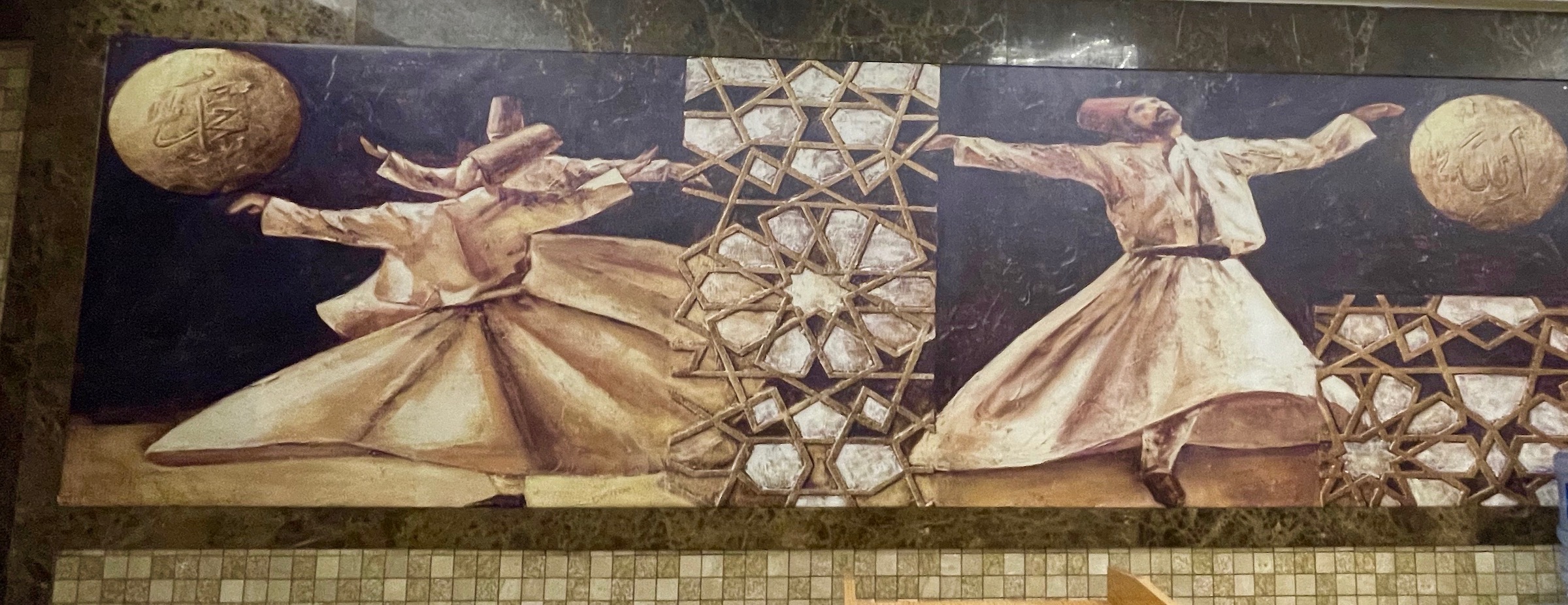
The breakfast buffet was among the best on the trip with a huge selection of cheeses.

And olives. Two of my favourites.

Add in some hot selections.

And you’ve got yourself a fine breakfast.
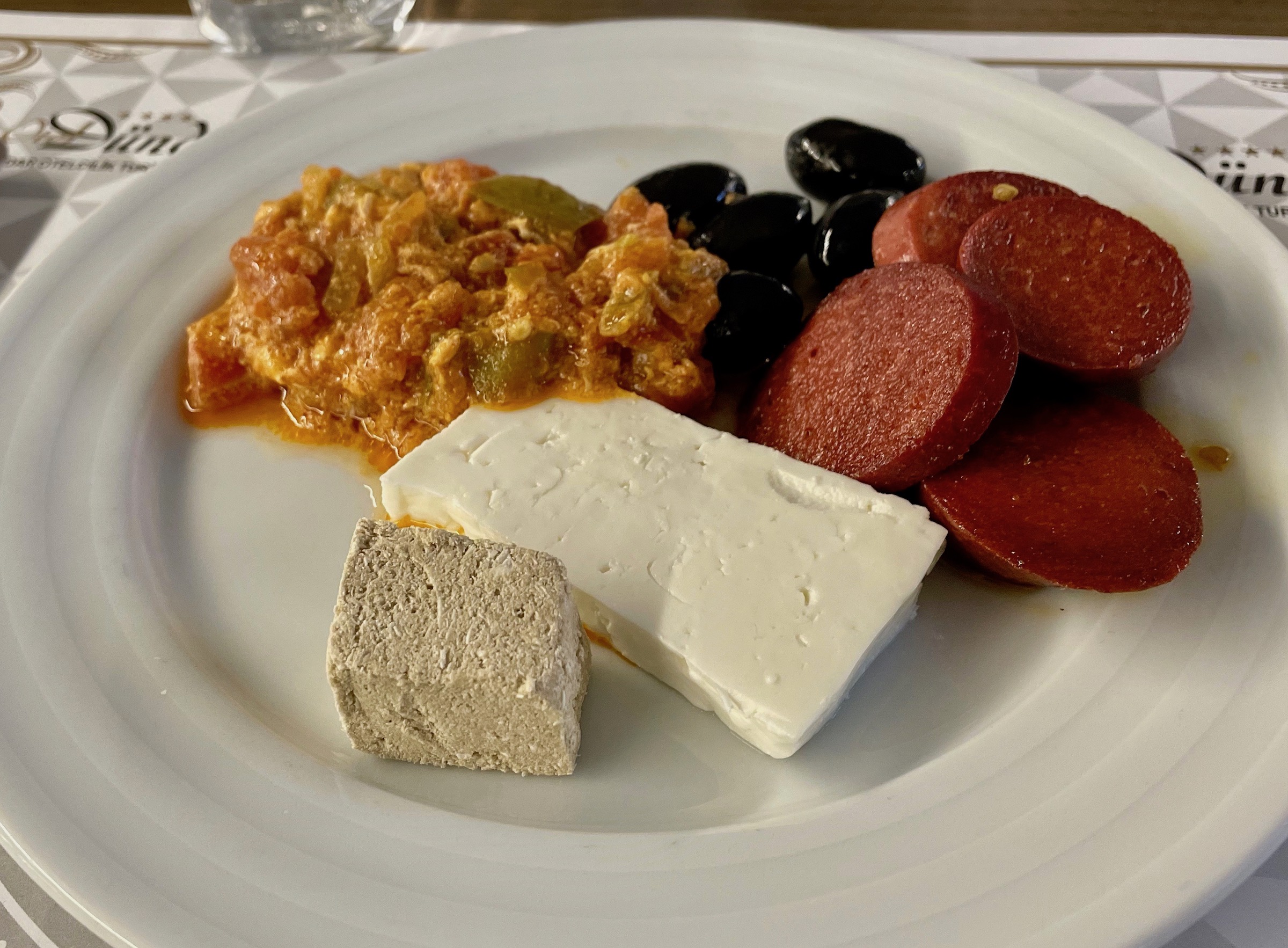
Notice the cube at the bottom left. This is helva or halvah, a wonderful confection that originated in Persia, but is widespread across Asia, eastern Europe and North Africa including kosher cuisine. They used to sell a version of it in Canada that I loved as a kid, but I had not seen it in years. The Hotel Dündar was the only place I saw it on offer in Turkey. It doesn’t look like much, but trust me it’s very tasty.
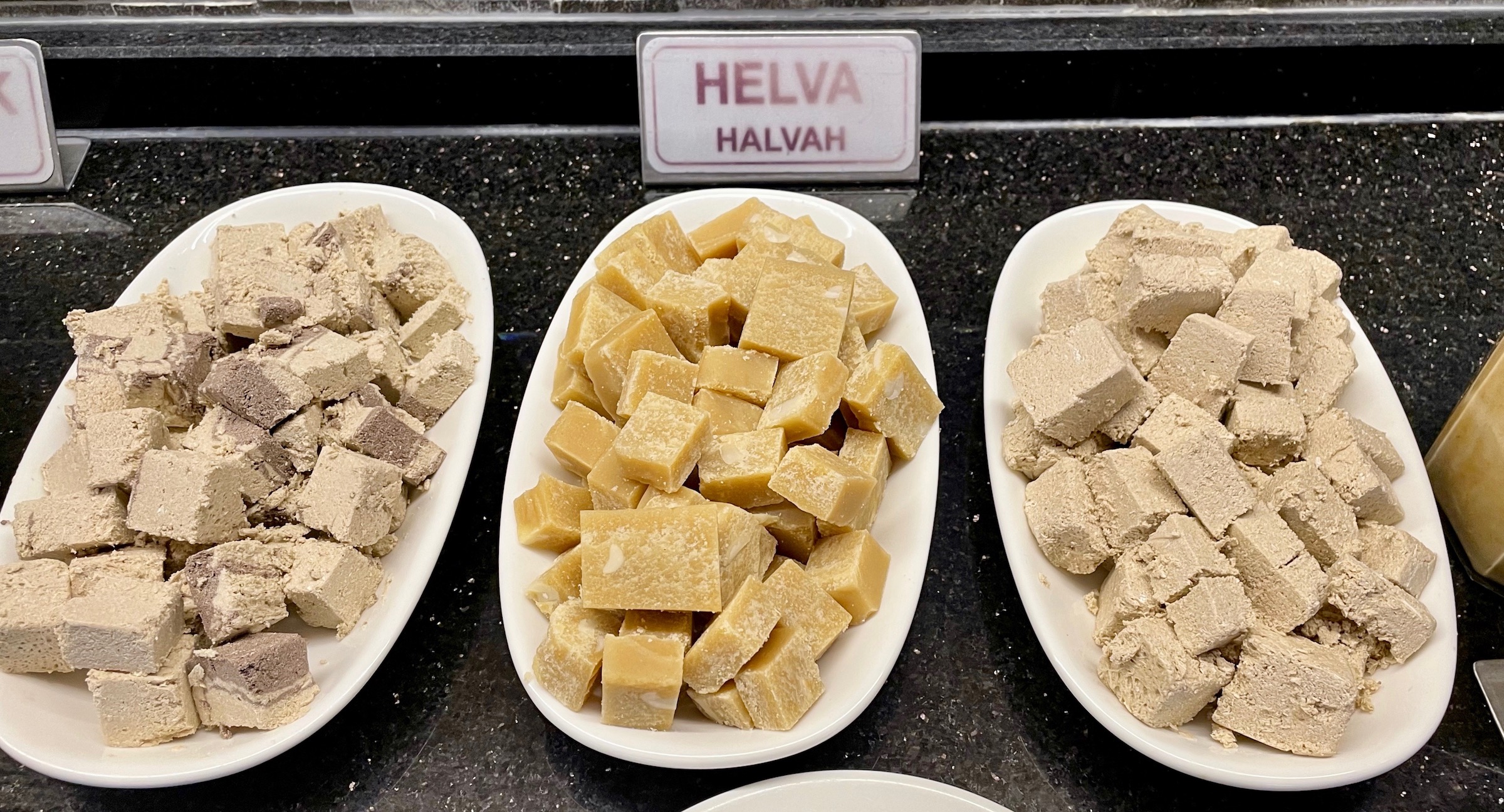
That concludes our visit to Konya. In the next post we’ll head into the fabled land of Cappadocia, a place I have waited all my life to visit. Please join us there.

